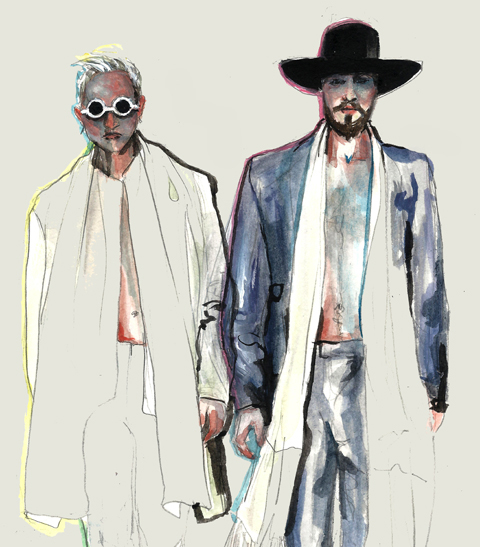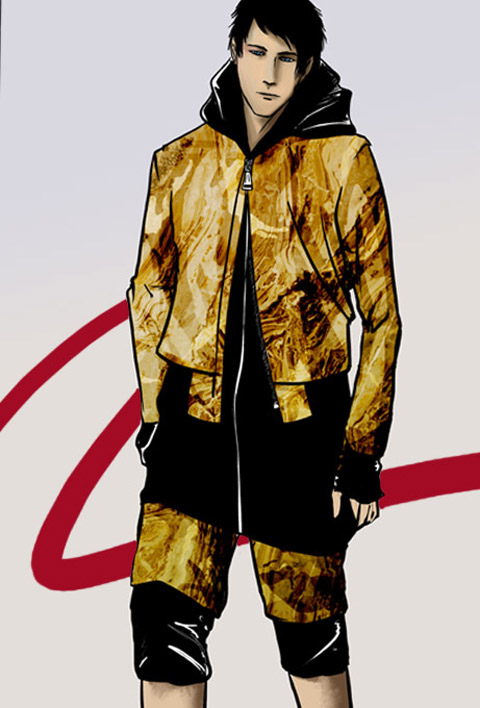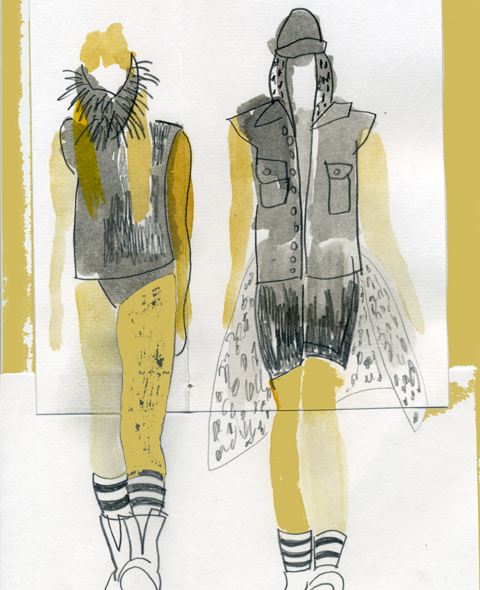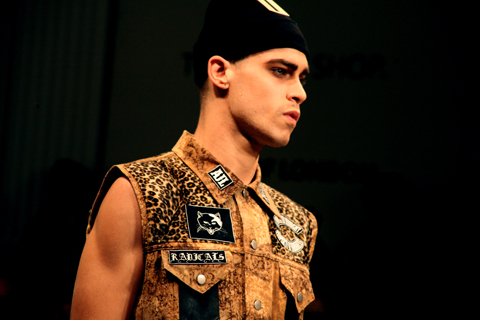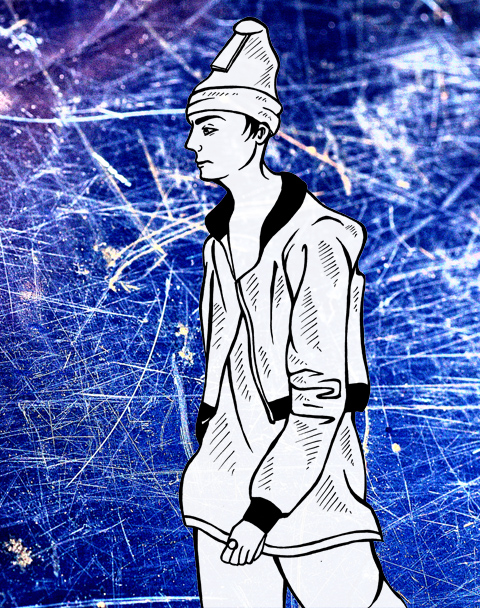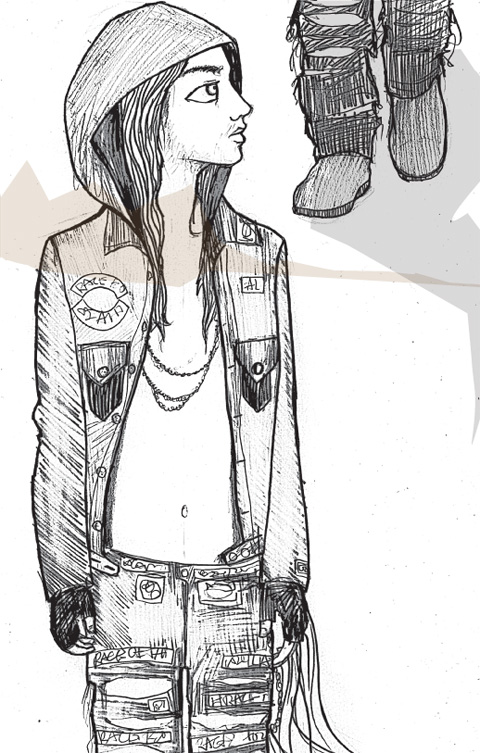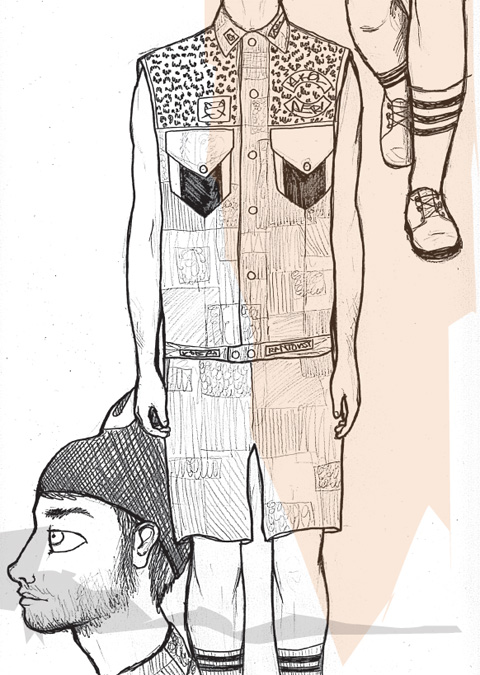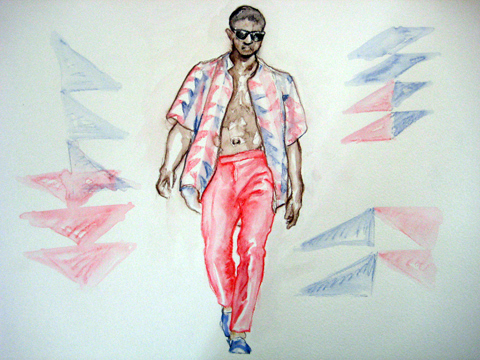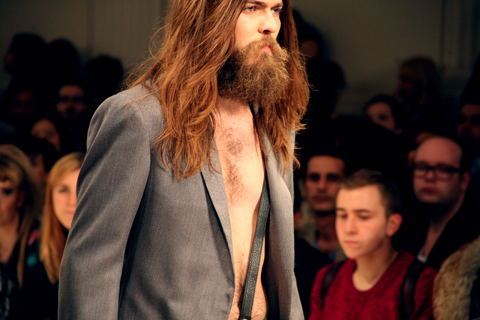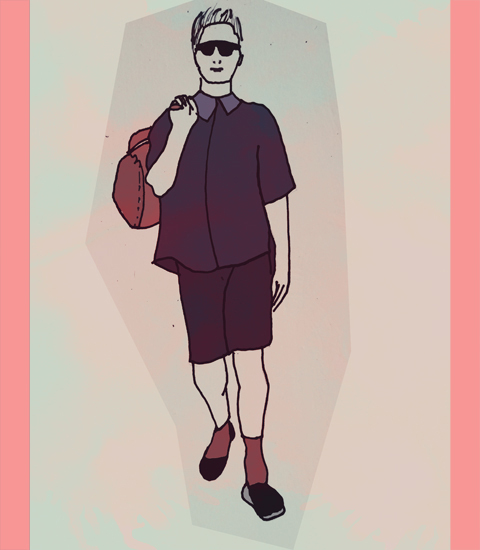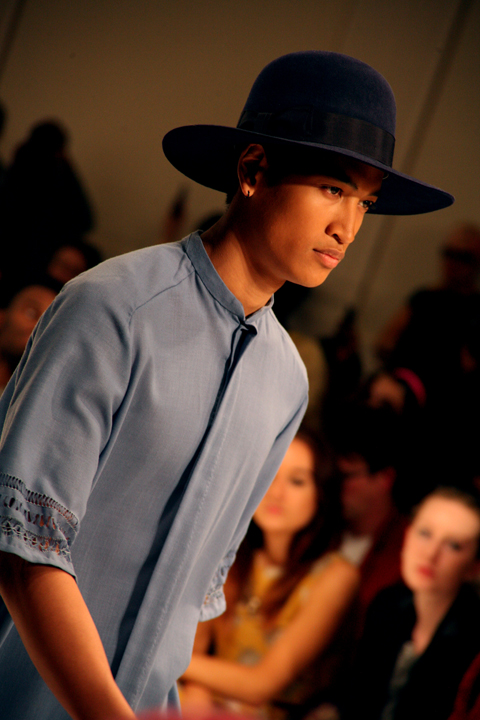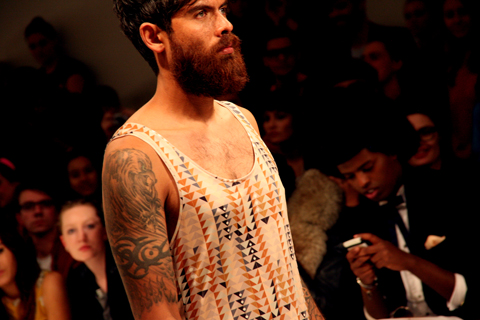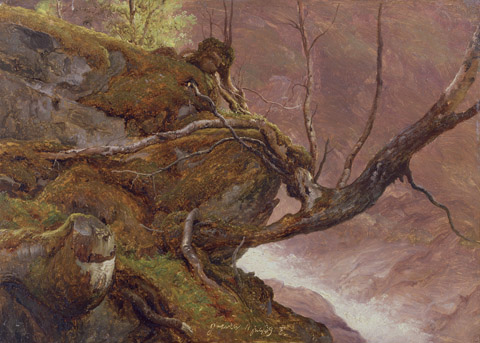
We are circling the Blue Ridge Mountains in a car packed with sleeping bags, tent, dresses, and emergency granola bars. My friend Harper Cowan and I have a month on the road, an itinerary of intentional communities to visit, and a modest bag of camera equipment. Filming a documentary about communes on the east coast of America has been a fantasy of ours for years, and now here we are, sleeping in the wilderness, constantly losing our tripod, and setting our dream into motion.

Jessica at Mountain Gardens
At each stop off we are asked for our reasons behind making the film. A large part is curiosity – do people still live in communes? Would I like it? What do they do? Are they making a difference? Mainly though, we’ve been growing restless with our lifestyle. We both want to live in the contemporary world, but it isn’t contemporary anymore to be abusing the planet (and one another) in the way we do. There must be alternatives to all the loneliness and isolation. The unfulfilling jobs, the spending, and the wastefulness we are a part of. We have been searching for a deeper connection to ourselves, to others, and to the environment, with the desire to share what we’re finding, and create the changes we so desperately need.
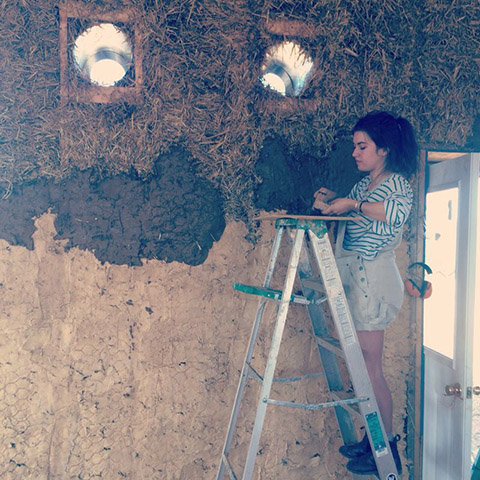
Harper at LEF.
We begin our journey heading south down the highway from New York. Seven hours later, scribbling last minute questions into a notebook that we won’t look at again, we turn down a concealed backroad, somewhere in Virginia. While waiting for Shaun, the founder of Living Energy Farm, to come and meet us, we take a photo on the rock to cement the start of our adventure. A bearded stranger lopes over the hilltop, and leads us on a hike through the undergrowth, away from the last traces of small town civilisation. He warns of copperhead snakes and black widow spiders, and tells us to check for ticks every night before bed.

At the central camp the barren land slopes away into tangles of desert weeds and parched forest. A group of six-to-eight core members live here in tents, with a couple of barefoot blonde children and a baby goat. Things are just beginning – there is so much to be decided and built still, and the conditions are hardcore. This tiny community is less than three years old, and the team is disciplined and determined to keep their modest dream alive.

Track to Earth Haven.
We are shown around and told to put our camera away. This reluctance pops up sometimes at other communities, too. We meet one man with a mission to erase every photo, clip, and shred of evidence of himself from the internet. His life story is incredible, but he has strongly intended to escape that world, and we know we need to be sensitive.

Our days at LEF are hot and dusty. I watch a woman skin a rabbit and turn the carcass inside-out over a stick, attempting to make a case for her knife. The children lay out a tiny tea set on the earth, and traumatise the goat. A Texan native teaches us to stucco the walls of a newly-erected straw-bale kitchen. We stir up sloppy mixtures of clay, lime, and rainwater in a wheelbarrow and slap it onto the rough walls. It ends up down our clothes and in our mouths, but it’s therapeutic and inspiring. Alexis, a core member of LEF and environmental-ambassador, talks us through the building process. His passion shines as he opens up about eco-building, cooperative usage, and shared resources. “Why cook seven meals in seven separate kitchens, when cooking together uses a fraction of the electricity? Why heat our individual boxes, when communing in one space conserves so much?”
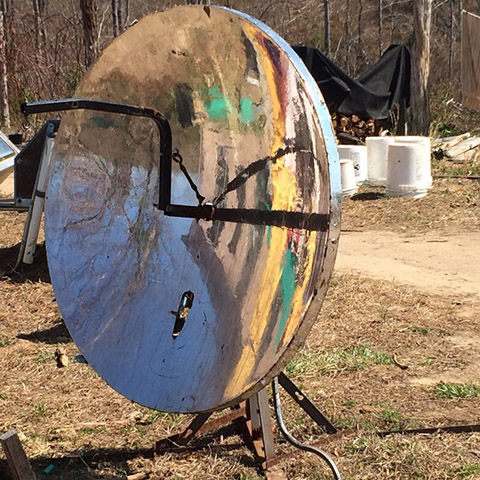
Parabolic cooker.
In the evenings we share skip-dived meals with weather-worn strangers, often in silence. I watch a man hang a saucepan of cold stew from a large silver disc, (a parabolic cooker) and point it at the sun. He demonstrates raw solar power by holding a twig in front of the disc. It sets on fire in seconds.

Music at Snaggy Mountain.
Our evenings are often cut short without artificial light. These pioneers use almost no fossil fuels (with an aim to use zero once the building has concluded), and so when the sun goes down, so do we. On our last evening, we sit outside our $30 tent and I play guitar with a young man who is completely jaded with the world. He has been beaten around by city life more than most, and is making a new start here, unlike anything he’s used to.

Medicine Wheel Kitchen at Earth Haven.
After Living Energy, we stay at Acorn, Earth Haven, Twin Oaks. We fall behind schedule. The stories unfolding – and individuals encountered – at each place are worthy of their own articles. We find it harder and harder to leave each time. Acorn, in Louisa County, Virginia, is brimming with youthful vibrance. One girl plays accordion and sings for us; another strums a harp. It’s a grounding feeling, to be so welcomed. Earth Haven is the same. So easy to live freely there, amongst the cabins and earth-ships. I make plans to return.
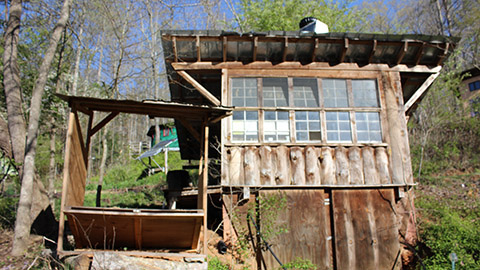
Cabin at Earth Haven.
At Twin Oaks, we are treated to a tour from Valerie. It’s different from LEF – all the communities vary in character and ideals far more than I had assumed. With over one hundred members, it’s one of the oldest and largest in America. It feels like a beautiful college campus for all ages. Life is organised like clockwork.There are charts for everything, from car sharing to money lending. There’s a women’s lodge, annual conferences, expansive vegetable gardens, and a field of solar panels. Plants spill from pots in the central quad. Hammocks are strung up on porches – Twin Oaks run a successful hammock weaving enterprise, as well as a tofu business, both of which support their income-sharing lifestyle. Much like most other communities, decisions are made at General Consensus meetings. Everyone’s opinion counts, which means that if one person disagrees, the motion is hard to pass. (And the motion could be as little as digging a pond, or installing a pingpong table.)

We drive further south. Couchsurf in Asheville, North Carolina, before finding the nearby Snaggy Mountain. It’s here that we realise a month isn’t going to be adequate time to film this documentary. We still have so many places we are scheduled to visit, and our road trip is running out. Each stop-off has become another beautiful encompassing world, another blessing teaching us so much about living. We don’t seem to be able to leave Snaggy at all – it feels like perhaps we’re stuck here for good. I have released fears of poisonous snakes, burrowing ticks, and rugged outdoor living. I have relaxed in a way I find impossible in my normal routine.

Cabin at Snaggy Mountain.
So here I am. Wrapped in tick-ridden blankets under a North Carolina sky, watching shooting stars burn streaks across the heavens. Next to me lie my fellow east coast wanderer, Harper, and Jared, the peaceful founder of this community. His grandfather’s land, once home to dairy farming, is now a WWOOFERs paradise of hand built cabins, a Kesey-inspired bus, yoga platform, vegetable beds, herb gardens, and a pet pig. The core members of Snaggy are joined every summer by an influx of volunteers and musicians, keen to learn about foraging and planting seeds, play banjo in the woods, and paint murals on bedroom walls. I scour bookshelves brimming with permaculture, herbal remedies, astrology, Castaneda, mushrooms, modern pagans, and the cosmos. The season is just hotting up when we arrive, and already our nights are filled with dancing, communal homegrown meals, and festivals.

Acorn Toothbrushes.
Tonight is quieter though, and back on our wooden bed, under the stars, the three of us chant Walt Whitman‘s Song of the Open Road. We fall asleep to the sound of coyote packs wailing on Mount Silo. Drizzle mists our faces. I feel more free, open, and inspired than I have felt in years. We’ve spent the day interviewing members of the farm. Everyone we have met over the last month thinks about life. There’s so much time to, with the lack of TVs and outside distractions. So much time to get to know each other. It’s deeply inspiring to speak with so many who consider their actions, and seek meaning away from materialism.
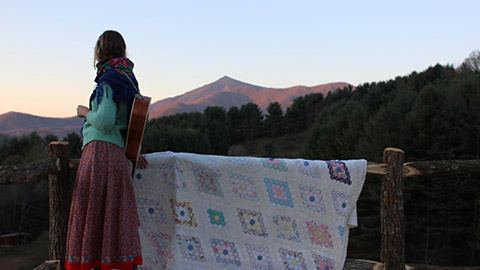
Snaggy Mountain.
Lots of these people have given up parts of themselves that weren’t necessarily easy to leave behind. The sacrifice is present in some people’s lives, but mostly they seem happier, and acutely aware that the prize is the earth. It’s not all perfect. One man tells us he thought joining a community would put an end to his loneliness, but he’s not sure it has. He’s thinking of moving on. It’s been more beautiful, more adventurous, and wilder than I could have imagined. Our hips ache from sleeping on bare earth. I’ve made friends I will know forever. And the film-making has been a wonderful journey of its own. We are hooked – in September I will cross the Atlantic again to continue filming and discovering radical ways of living. The documentary will be edited over winter 2014, so please sign up here if you would like a copy.
Harper: “I’m so excited and proud to share with people where Jess and I have just come from, what we’ve seen – It’s SO good out there, there are so many good people, doing such good things. The world is big and beautiful and I have hope. People are amazing.”
You can support Jess and Harper make their film by visiting www.animarising.squarespace.com (Soon to change to animarising.net)
Written by Jessica Watkins on Tuesday July 29th, 2014 9:02 pm
Categories ,Acorn, ,America, ,Anima Rising, ,Asheville, ,Blue Ridge Mountains, ,Communes, ,Communities, ,Earth Haven, ,Ecocommunity, ,film, ,General Consensus, ,Harper, ,Harper Cowan, ,Jessica Watkins, ,LEF, ,Living Energy Farm, ,Mount Silo, ,North Carolina, ,Roadtrip, ,Self Sustainable, ,Shaun, ,Snaggy Mountain, ,Song of the Open Road, ,Straw bale, ,Twin Oaks, ,Ways of Living, ,Wilderness
Similar Posts:
